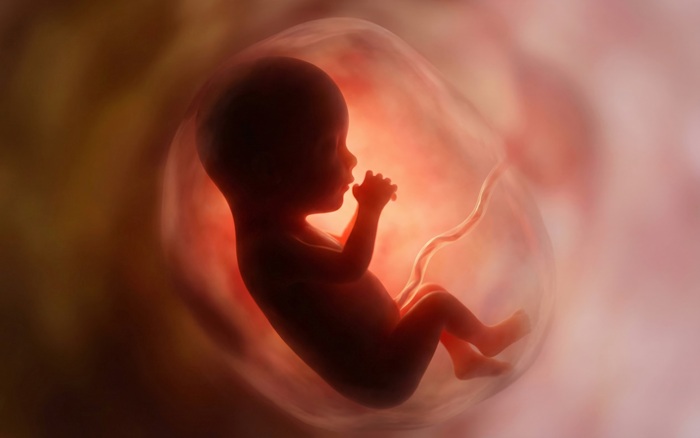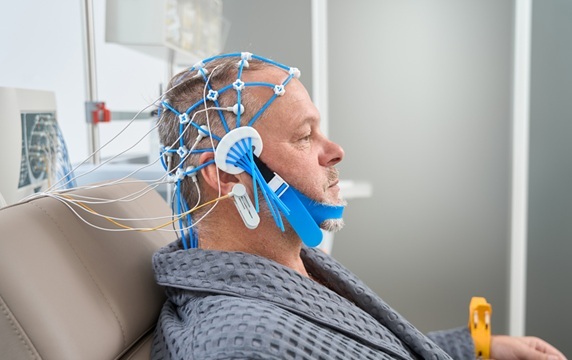COVID-19 HPC Consortium Aids Use of Machine Learning and Molecular Modelling to Improve Drug Discovery
|
By HospiMedica International staff writers Posted on 08 Jul 2020 |

Illustration
The COVID-19 High Performance Computing (HPC) Consortium has been launched to provide access to the world’s most powerful high-performance computing resources in support of COVID-19 research.
The COVID-19 HPC Consortium is a unique private-public effort spearheaded by the White House Office of Science and Technology Policy, the US Department of Energy and IBM to bring together federal government, industry, and academic leaders who are volunteering free compute time and resources on their world-class machines. The consortium helps aggregate computing capabilities from the world's most powerful and advanced computers to help COVID-19 researchers execute complex computational research programs to help fight the virus.
Consortium members and affiliates manage a range of computing capabilities: from small clusters to some of the largest supercomputers in the world. They offer not only computational resources, but also software, services, and deep technical expertise to help COVID-19 researchers execute complex computational research programs. Collectively, the consortium offers access to 485 petaflops, five million CPUs, and 50,000 GPUs. Most of the collective power is delivered via supercomputers based on Intel technology. The consortium includes some of the world’s top-performing supercomputing centers, such as the Texas Advanced Computer Center (TACC) at The University of Texas, Department of Energy’s Argonne National Laboratory, and the Pittsburgh Supercomputing Center, among others.
Taking advantage of Intel technologies, scientists are advancing their algorithms and software in ways that are crucial for understanding COVID-19. For instance, scientists aim to combine machine learning (ML) and molecular modelling to improve virtual screening and drug discovery applications targeting COVID-19. They have developed a genetic algorithm capable of searching chemical space surrounding existing antiviral drugs and a deep learning based classification model based on existing public coronavirus binding data (for the SARS-CoV-2 main protease). The scientists plan to combine and extend these tools through a combination of docking and simulation which we can use as inputs to a regression based deep learning model. A key component of their approach will be to use an enhanced version of the out of distribution classification algorithms created previously to design novel kinase (CDK9) inhibitors to identify molecules which have maximum value in terms of expanding the validity of their model. Enhancing their model from a classification model to one capable of regression in this way should provide greatly enhanced capabilities to identify both existing drugs with potential to treat COVID-19 (virtual screening) as well as the discovery of new active compounds.
The COVID-19 HPC Consortium is a unique private-public effort spearheaded by the White House Office of Science and Technology Policy, the US Department of Energy and IBM to bring together federal government, industry, and academic leaders who are volunteering free compute time and resources on their world-class machines. The consortium helps aggregate computing capabilities from the world's most powerful and advanced computers to help COVID-19 researchers execute complex computational research programs to help fight the virus.
Consortium members and affiliates manage a range of computing capabilities: from small clusters to some of the largest supercomputers in the world. They offer not only computational resources, but also software, services, and deep technical expertise to help COVID-19 researchers execute complex computational research programs. Collectively, the consortium offers access to 485 petaflops, five million CPUs, and 50,000 GPUs. Most of the collective power is delivered via supercomputers based on Intel technology. The consortium includes some of the world’s top-performing supercomputing centers, such as the Texas Advanced Computer Center (TACC) at The University of Texas, Department of Energy’s Argonne National Laboratory, and the Pittsburgh Supercomputing Center, among others.
Taking advantage of Intel technologies, scientists are advancing their algorithms and software in ways that are crucial for understanding COVID-19. For instance, scientists aim to combine machine learning (ML) and molecular modelling to improve virtual screening and drug discovery applications targeting COVID-19. They have developed a genetic algorithm capable of searching chemical space surrounding existing antiviral drugs and a deep learning based classification model based on existing public coronavirus binding data (for the SARS-CoV-2 main protease). The scientists plan to combine and extend these tools through a combination of docking and simulation which we can use as inputs to a regression based deep learning model. A key component of their approach will be to use an enhanced version of the out of distribution classification algorithms created previously to design novel kinase (CDK9) inhibitors to identify molecules which have maximum value in terms of expanding the validity of their model. Enhancing their model from a classification model to one capable of regression in this way should provide greatly enhanced capabilities to identify both existing drugs with potential to treat COVID-19 (virtual screening) as well as the discovery of new active compounds.
Latest COVID-19 News
- Low-Cost System Detects SARS-CoV-2 Virus in Hospital Air Using High-Tech Bubbles
- World's First Inhalable COVID-19 Vaccine Approved in China
- COVID-19 Vaccine Patch Fights SARS-CoV-2 Variants Better than Needles
- Blood Viscosity Testing Can Predict Risk of Death in Hospitalized COVID-19 Patients
- ‘Covid Computer’ Uses AI to Detect COVID-19 from Chest CT Scans
- MRI Lung-Imaging Technique Shows Cause of Long-COVID Symptoms
- Chest CT Scans of COVID-19 Patients Could Help Distinguish Between SARS-CoV-2 Variants
- Specialized MRI Detects Lung Abnormalities in Non-Hospitalized Long COVID Patients
- AI Algorithm Identifies Hospitalized Patients at Highest Risk of Dying From COVID-19
- Sweat Sensor Detects Key Biomarkers That Provide Early Warning of COVID-19 and Flu
- Study Assesses Impact of COVID-19 on Ventilation/Perfusion Scintigraphy
- CT Imaging Study Finds Vaccination Reduces Risk of COVID-19 Associated Pulmonary Embolism
- Third Day in Hospital a ‘Tipping Point’ in Severity of COVID-19 Pneumonia
- Longer Interval Between COVID-19 Vaccines Generates Up to Nine Times as Many Antibodies
- AI Model for Monitoring COVID-19 Predicts Mortality Within First 30 Days of Admission
- AI Predicts COVID Prognosis at Near-Expert Level Based Off CT Scans
Channels
Critical Care
view channel
Bioadhesive Strategy Prevents Fibrosis Around Device Implants on Peripheral Nerves
Peripheral nerves connect the brain and spinal cord to muscles, organs, and sensory systems, making them key targets for treating neurological and systemic diseases. However, implantable bioelectronic... Read more
Miniature Non-Invasive Robotic Catheters to Improve Infertility Treatments
Minimally invasive procedures in reproductive and gynaecological medicine are often limited by the difficulty of navigating narrow, delicate anatomical pathways without damaging surrounding tissue.... Read moreSurgical Techniques
view channel
Catheter-Based Procedures Offer Less Invasive Option for Treatment of Valvular Disease
Valvular heart disease, caused by tight or leaky valves between heart chambers, affects up to 10% of older adults and leads to more than 120,000 deaths globally each year. Traditional open-heart surgery... Read moreLaparoscopic Surgery Improves Outcomes for Severe Newborn Liver Disease
Biliary atresia is a rare but life-threatening liver condition in newborns that blocks bile flow and leads to progressive liver damage if not treated early. Surgery is typically performed within the first... Read morePatient Care
view channel
Revolutionary Automatic IV-Line Flushing Device to Enhance Infusion Care
More than 80% of in-hospital patients receive intravenous (IV) therapy. Every dose of IV medicine delivered in a small volume (<250 mL) infusion bag should be followed by subsequent flushing to ensure... Read more
VR Training Tool Combats Contamination of Portable Medical Equipment
Healthcare-associated infections (HAIs) impact one in every 31 patients, cause nearly 100,000 deaths each year, and cost USD 28.4 billion in direct medical expenses. Notably, up to 75% of these infections... Read more
Portable Biosensor Platform to Reduce Hospital-Acquired Infections
Approximately 4 million patients in the European Union acquire healthcare-associated infections (HAIs) or nosocomial infections each year, with around 37,000 deaths directly resulting from these infections,... Read moreFirst-Of-Its-Kind Portable Germicidal Light Technology Disinfects High-Touch Clinical Surfaces in Seconds
Reducing healthcare-acquired infections (HAIs) remains a pressing issue within global healthcare systems. In the United States alone, 1.7 million patients contract HAIs annually, leading to approximately... Read moreHealth IT
view channel
EMR-Based Tool Predicts Graft Failure After Kidney Transplant
Kidney transplantation offers patients with end-stage kidney disease longer survival and better quality of life than dialysis, yet graft failure remains a major challenge. Although a successful transplant... Read more
Printable Molecule-Selective Nanoparticles Enable Mass Production of Wearable Biosensors
The future of medicine is likely to focus on the personalization of healthcare—understanding exactly what an individual requires and delivering the appropriate combination of nutrients, metabolites, and... Read moreBusiness
view channel
Philips and Masimo Partner to Advance Patient Monitoring Measurement Technologies
Royal Philips (Amsterdam, Netherlands) and Masimo (Irvine, California, USA) have renewed their multi-year strategic collaboration, combining Philips’ expertise in patient monitoring with Masimo’s noninvasive... Read more
B. Braun Acquires Digital Microsurgery Company True Digital Surgery
The high-end microsurgery market in neurosurgery, spine, and ENT is undergoing a significant transformation. Traditional analog microscopes are giving way to digital exoscopes, which provide improved visualization,... Read more
CMEF 2025 to Promote Holistic and High-Quality Development of Medical and Health Industry
The 92nd China International Medical Equipment Fair (CMEF 2025) Autumn Exhibition is scheduled to be held from September 26 to 29 at the China Import and Export Fair Complex (Canton Fair Complex) in Guangzhou.... Read more










.jpg)






